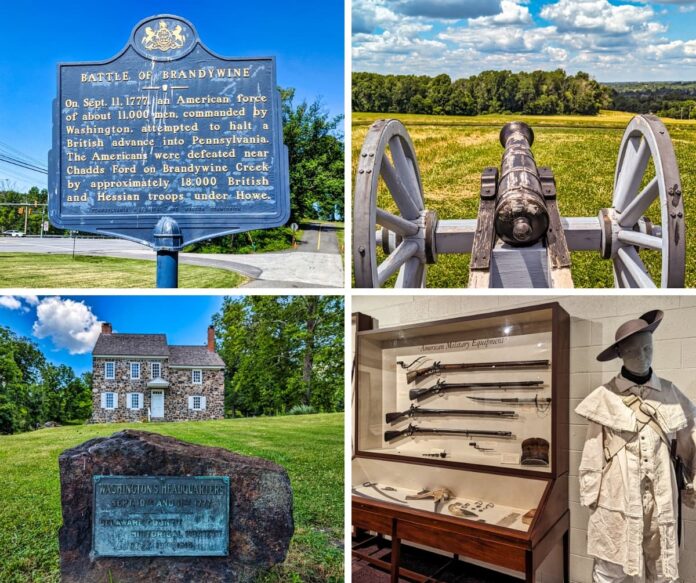
If you’re looking for information about visiting Brandywine Battlefield Park in Chester County, you’re in the right place!
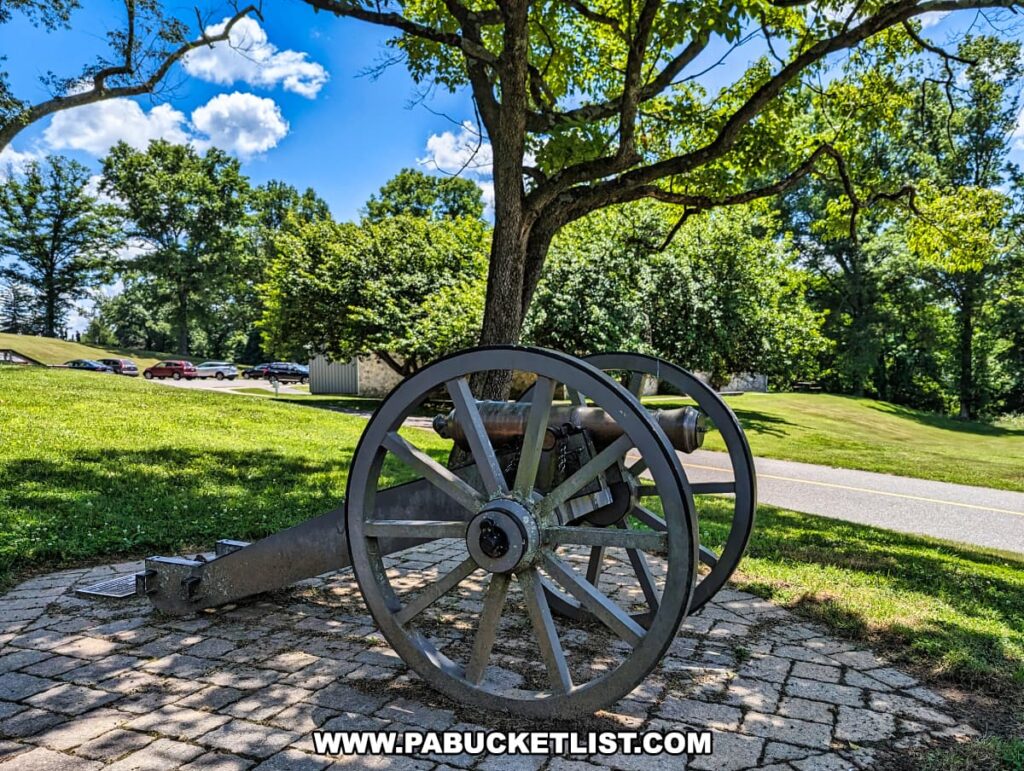
Brandywine Battlefield Park preserves and interprets the story of the Battle of Brandywine, the largest and longest single day land battle of the American Revolution.
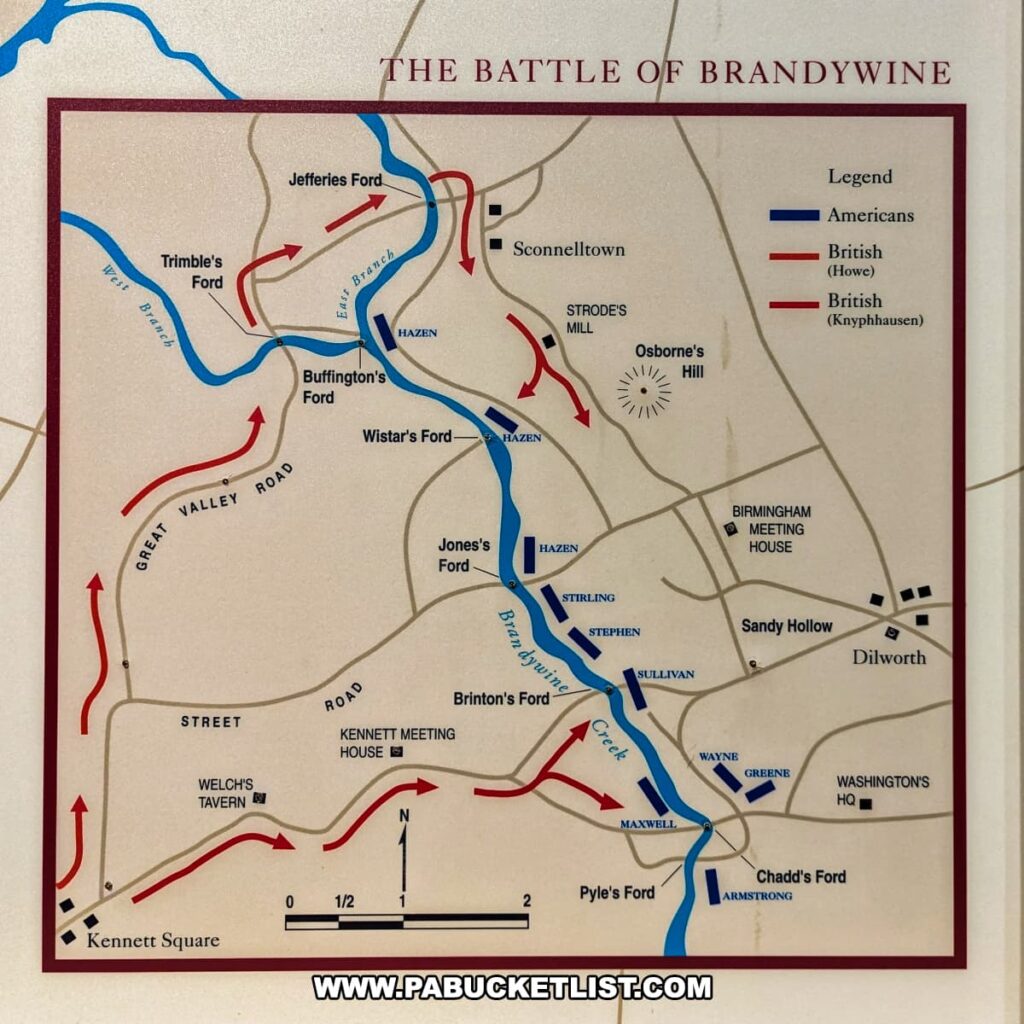
On September 11, 1777, the Battle of Brandywine took place, resulting in a significant British triumph that paved the way for their occupation of Philadelphia, the revolutionary capital, two weeks later.
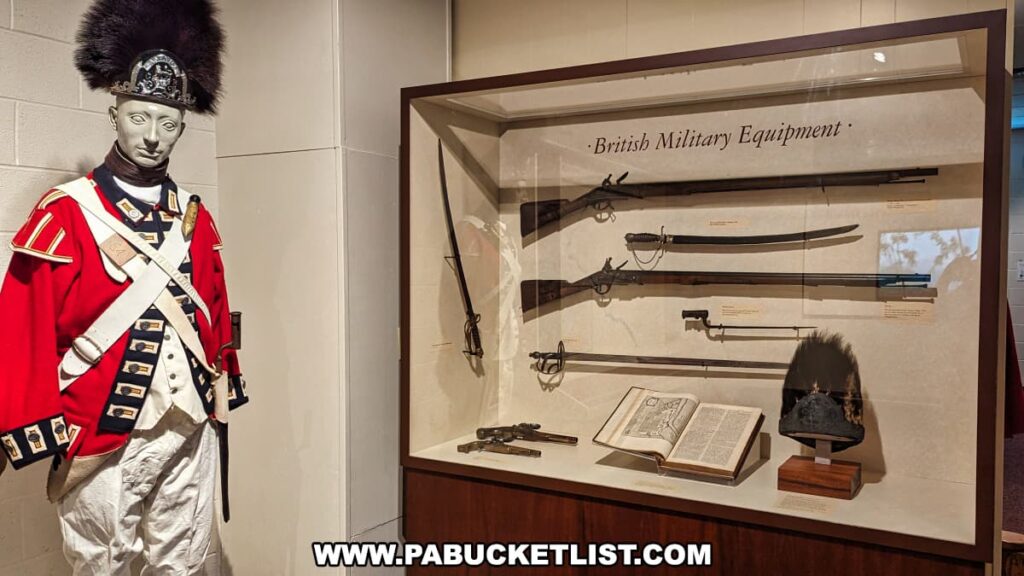
The park is home to a visitors center and museum, as well as several historic buildings.
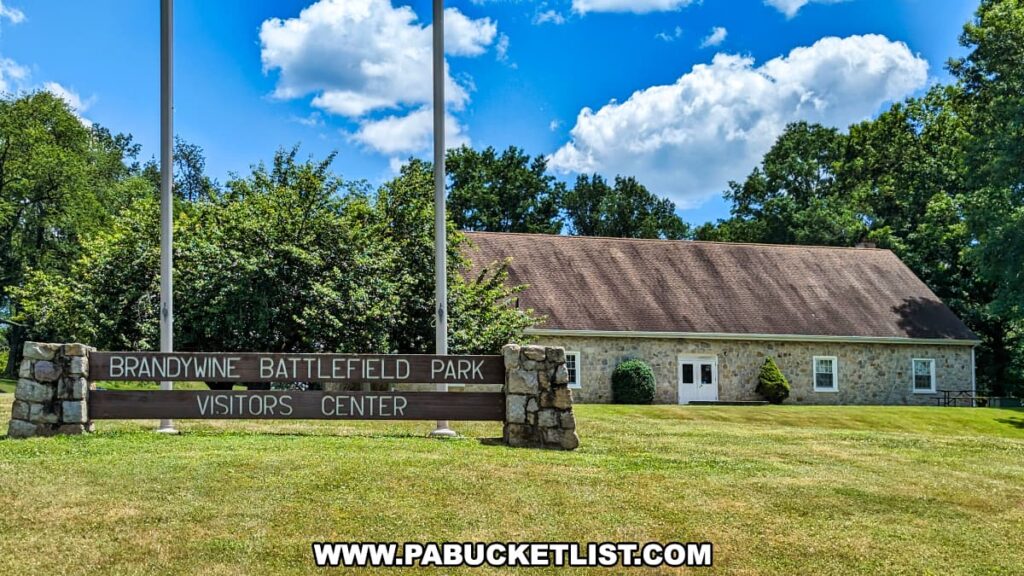
This 52-acre park is located on land that served as General George Washington’s Continental Army headquarters during the battle, part of the much larger 10 square mile battlefield.
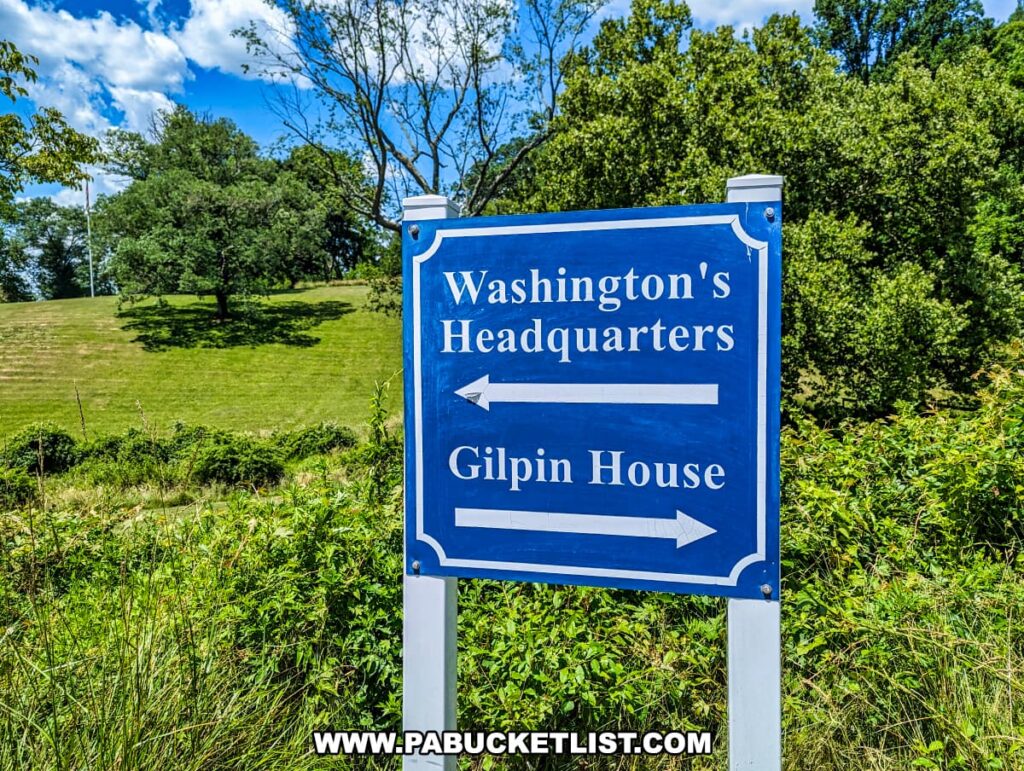
A pair of nearby parks preserve portions of the actual battlefield, and you can explore these on a self-guided driving tour known as the Brandywine Battlefield Trail.
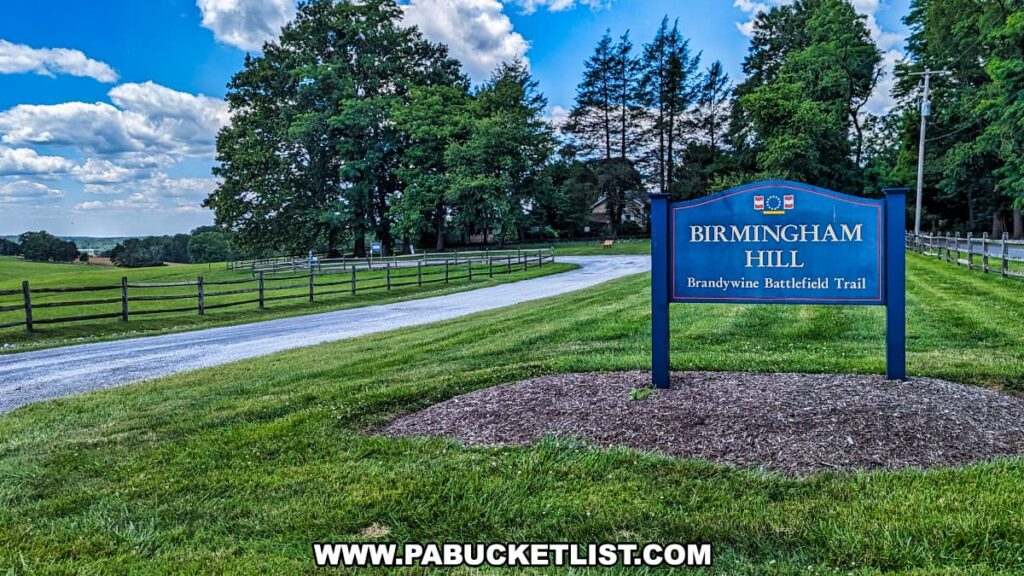
Directions | Hours | Admission Fees
The Brandywine Battlefield Park Visitor Center is located at 1491 Baltimore Pike, Chadds Ford, PA 19317.
The Visitors Center, museum, and historic homes at the park are open Friday & Saturday from 10:00 am – 4:00 pm.
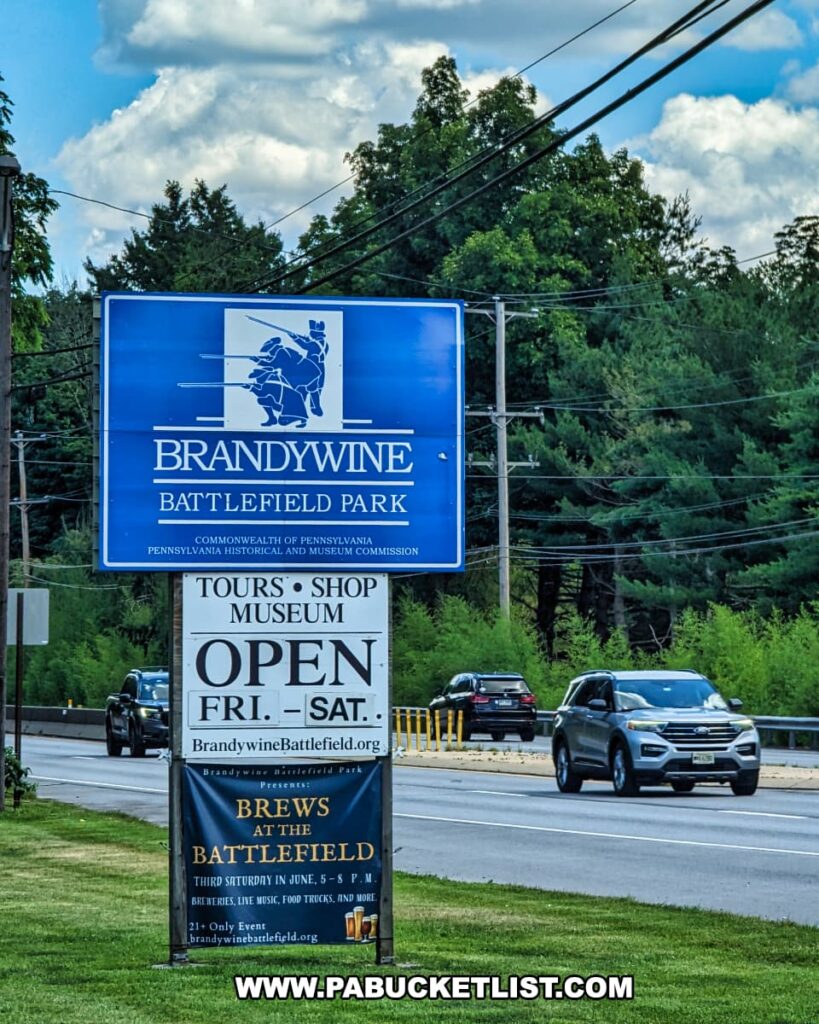
Admission fees as of 2024 are: Adults $8 | Seniors $7 | AAA / AARP $7 | Active Duty Military Free | Youth (3-11) $5 | Children (Under 3) Free.
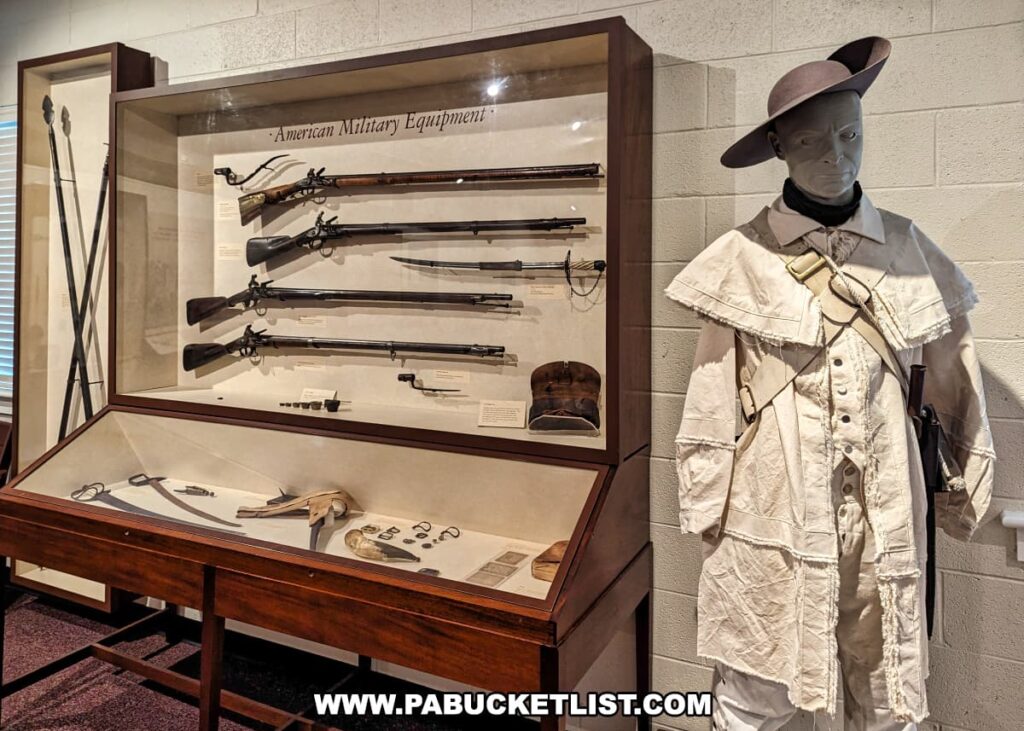
The admission fee gets you access to an 18 minute orientation film, museum admission, and guided tours of the Benjamin Ring House (Washington’s HQ) and the Gideon Gilpin House.
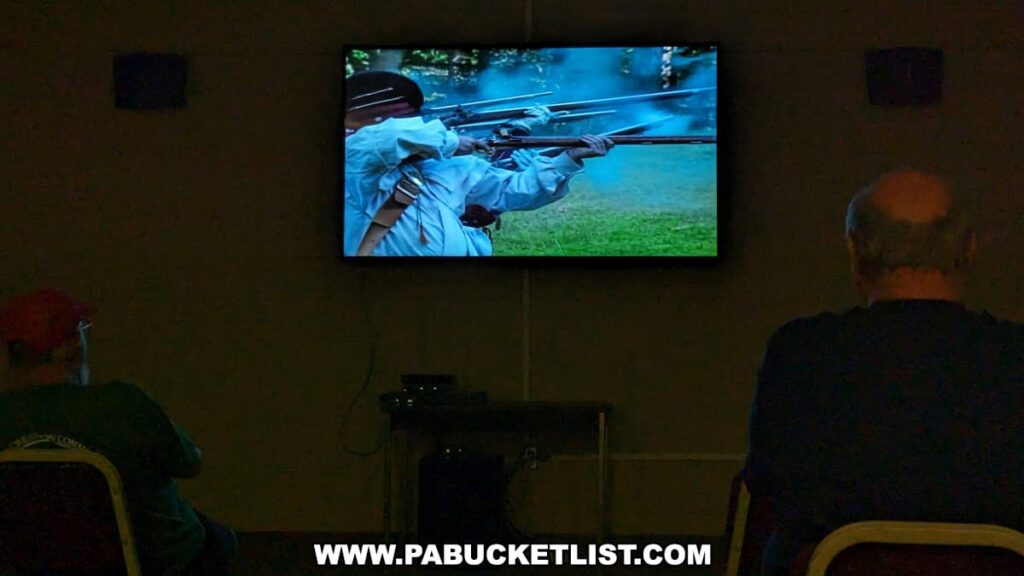
If you just want to walk the grounds, you can do that for free, but I can tell you from personal experience the film, museum, and guided house tours are well worth the price.
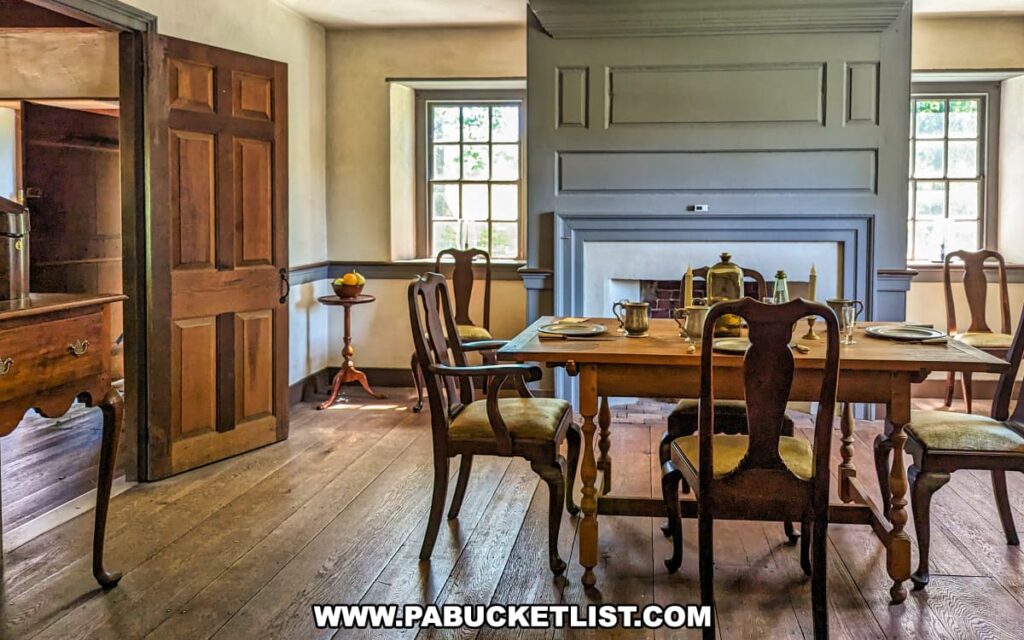
What You’ll See at the Brandywine Battlefield Park
Like any good museum, you enter and exit the Brandywine Battlefield Museum through the gift shop.
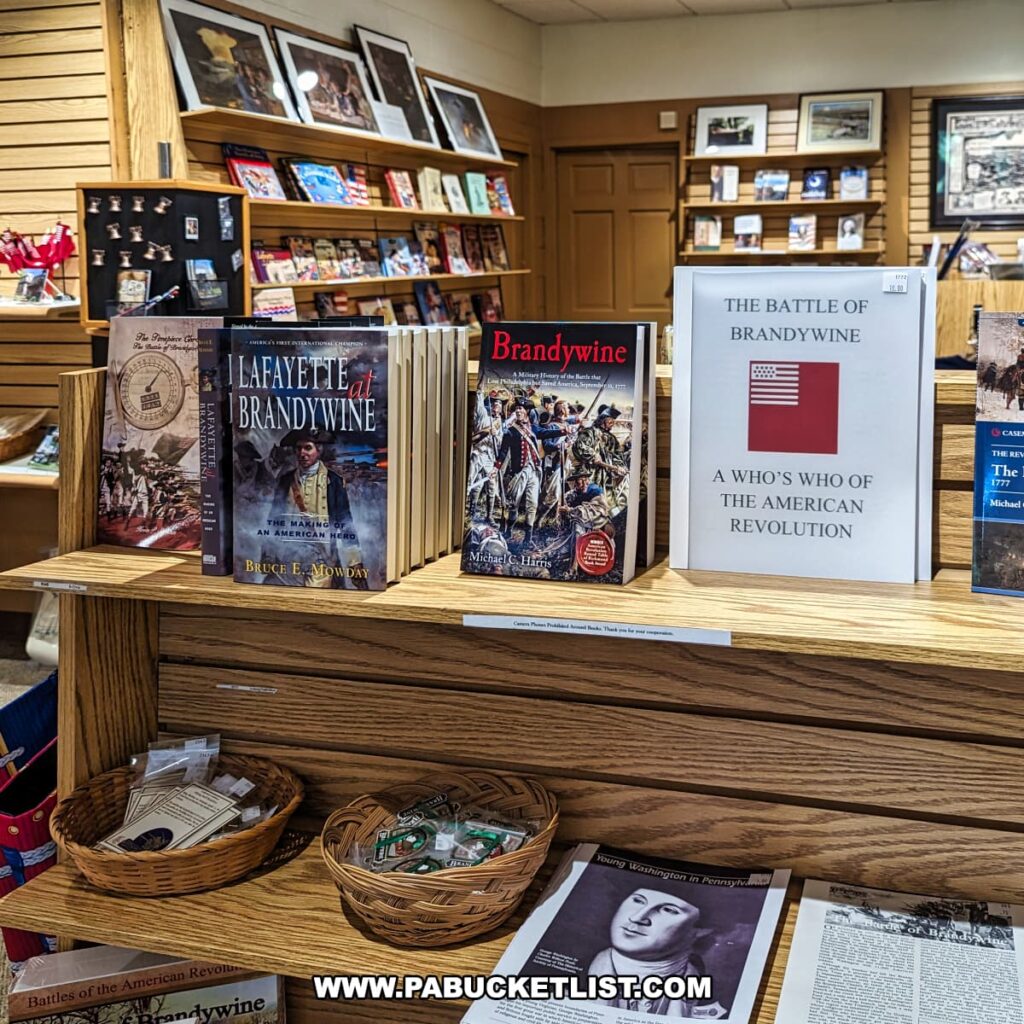
In the museum itself, you find replicas of British and Continental uniforms and weapons, as well as actual artifacts recovered from the battlefield.
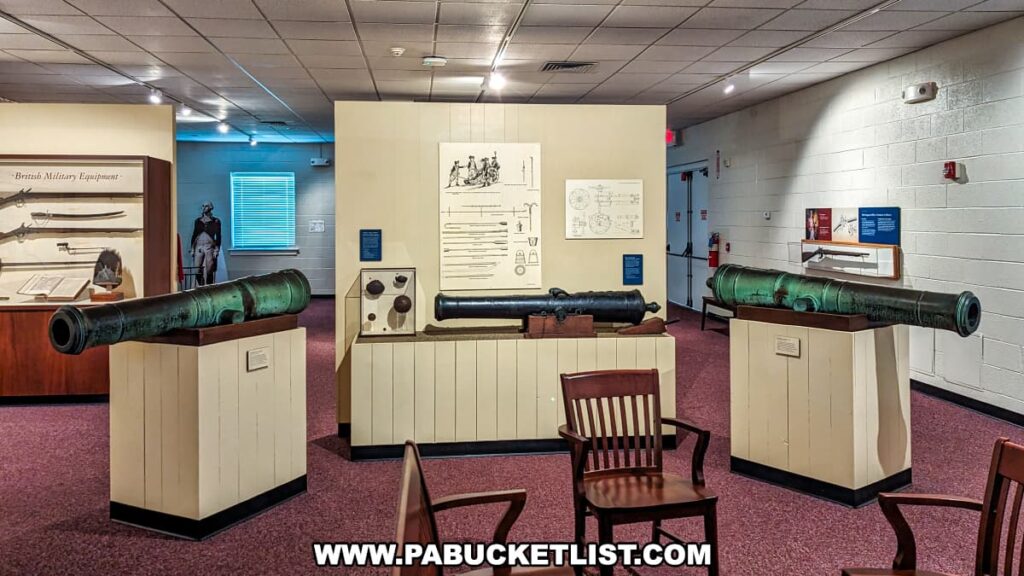
A number of dioramas and infographics help you understand the significant events that occurred during the battle.
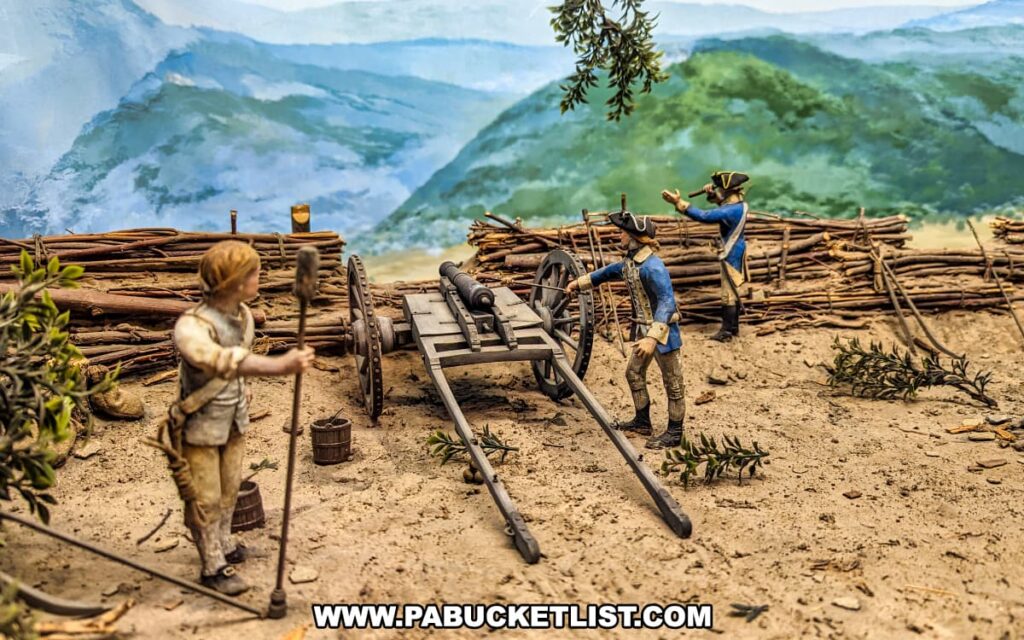
One relatively recent addition to the museum’s artifact collection is a long cheval de frise, basically a long spear used to prevent British ships from sailing up the Delaware River and capturing Philadelphia by sea.
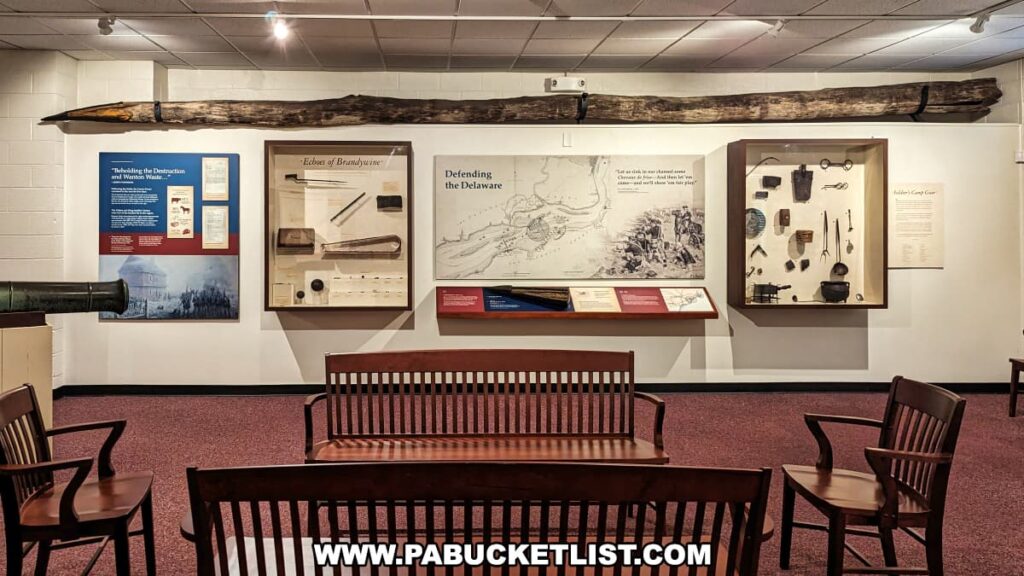
Defenses like these are why the British had to invade Philadelphia from the south and west, spawning the Battle of the Brandywine.
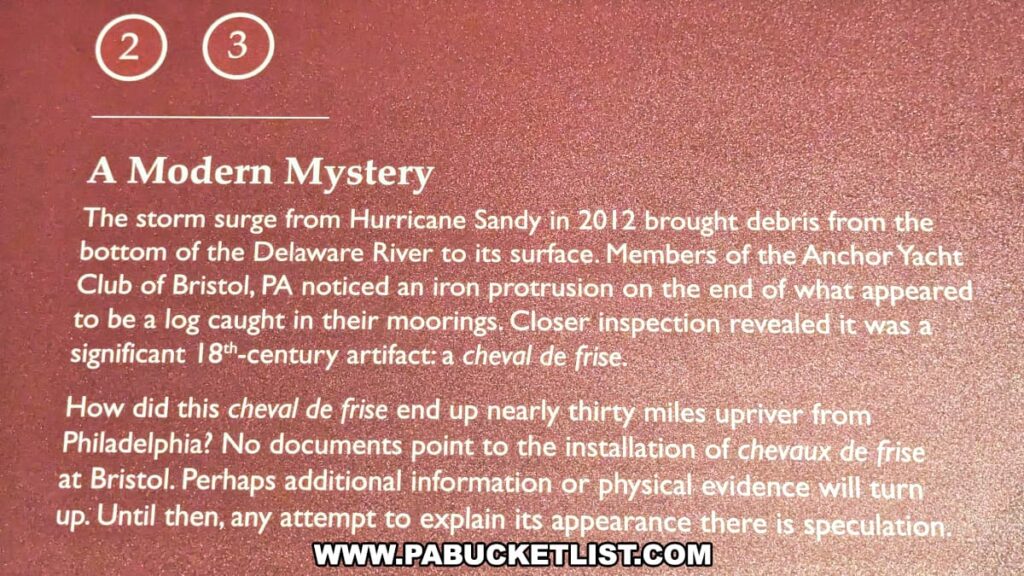
The Benjamin Ring House
The Benjamin Ring House is said to have been used by General George Washington as his headquarters in the days leading up to the battle.
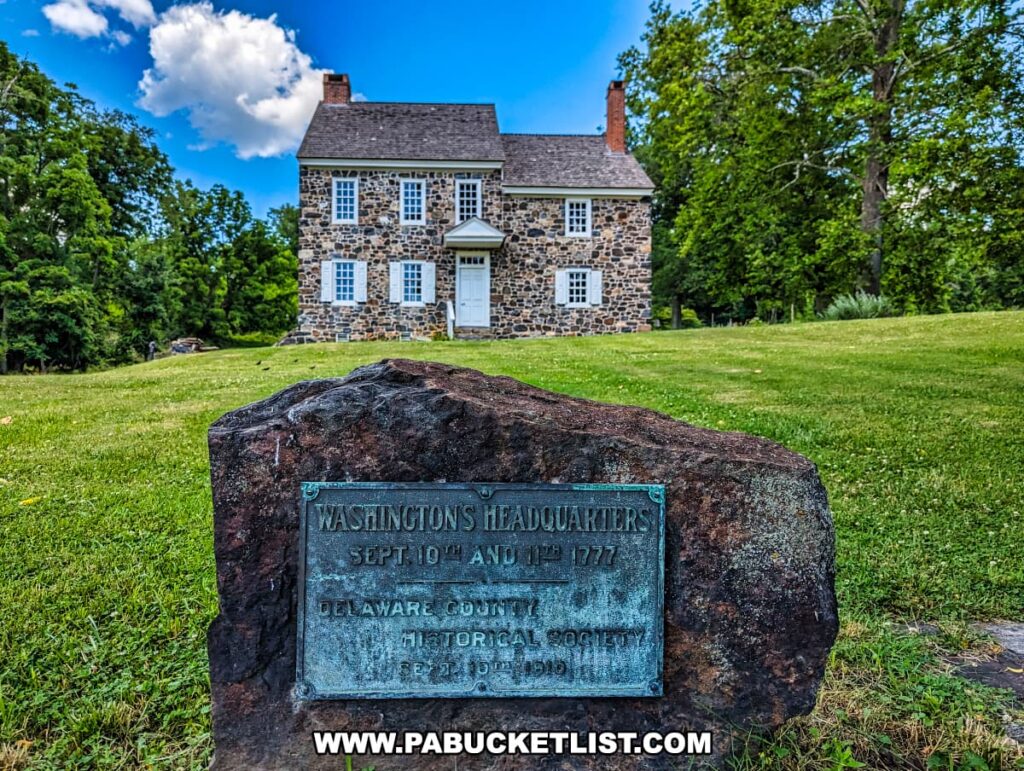
But as my tour guide pointed out, Washington had a habit of NOT commandeering people’s homes for his headquarters, instead using a large tent as his headquarters (the actual tent is on display at the Museum of the American Revolution in nearby Philadelphia).
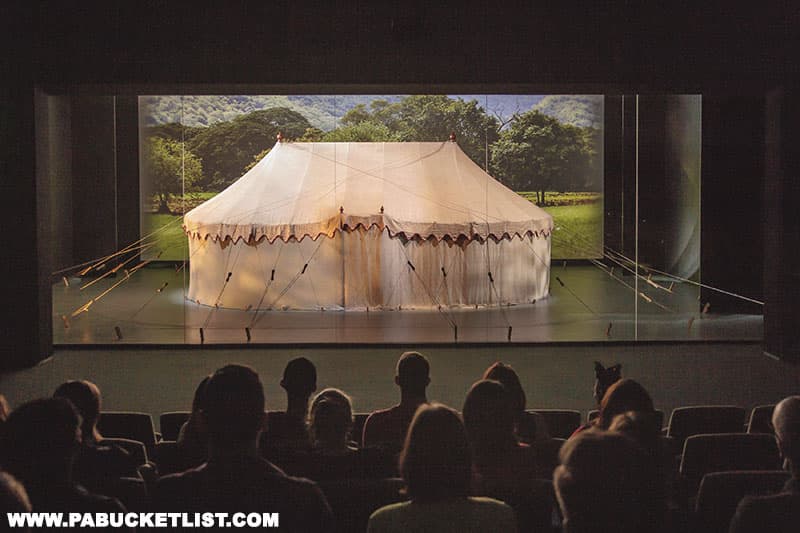
So while he may have set up his tent near the Benjamin Ring house, it’s less likely that he actually used the house as his headquarters.
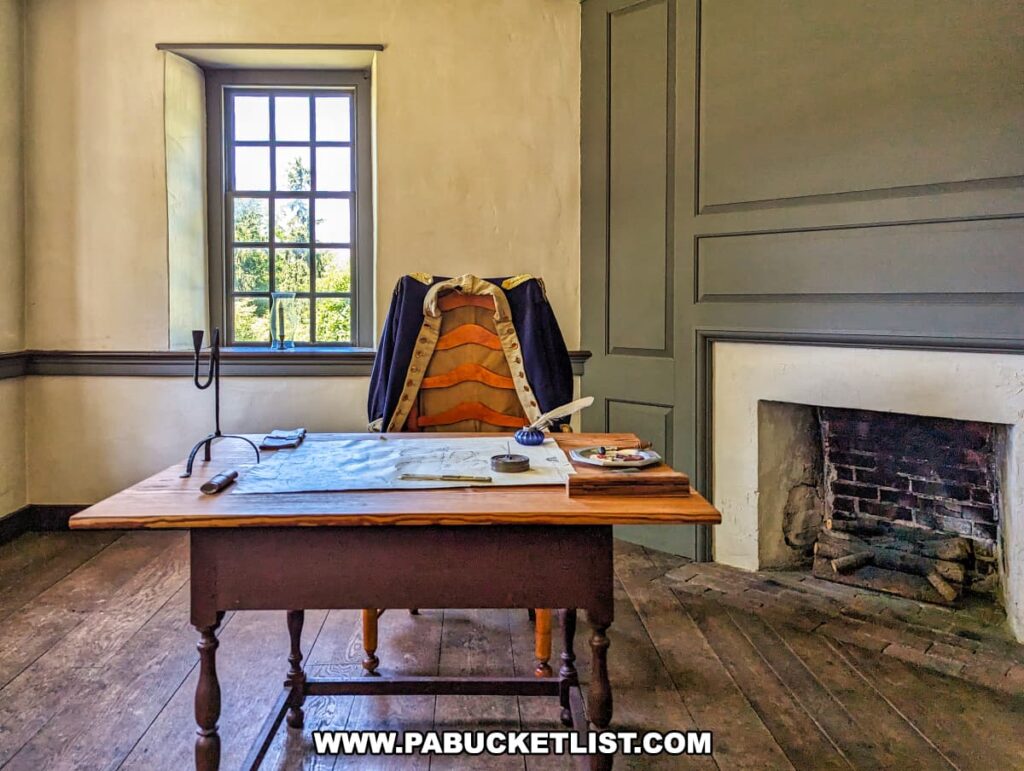
The house you see today is a period-correct replica built in the 1950s, as the original house burned to the ground in the 1930s.
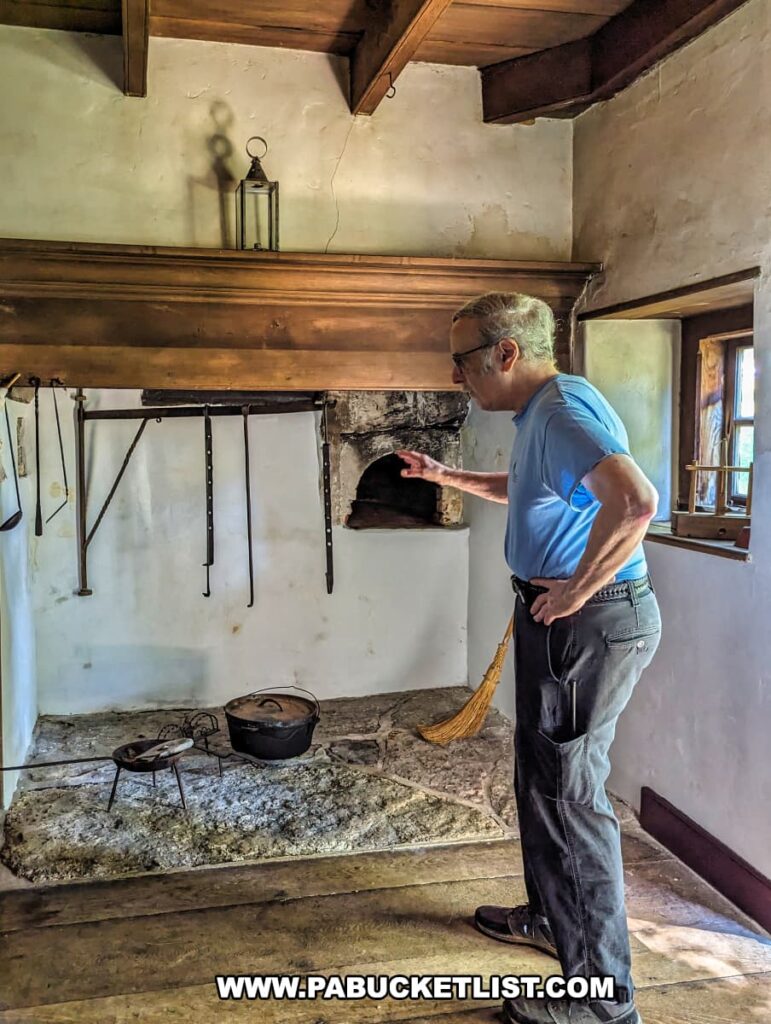
The Gideon Gilpin House
The Gideon Gilpin House at the Brandywine Battlefield Park IS an original home dating back to the time of the battle.
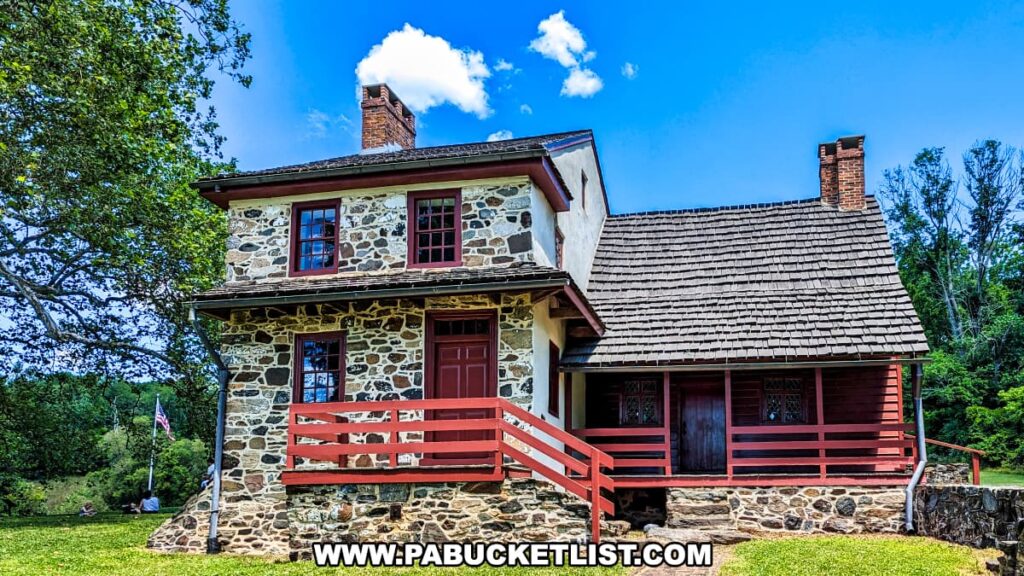
Gideon Gilpin was a prosperous Quaker farmer, and the home is furnished in period-correct fashion.
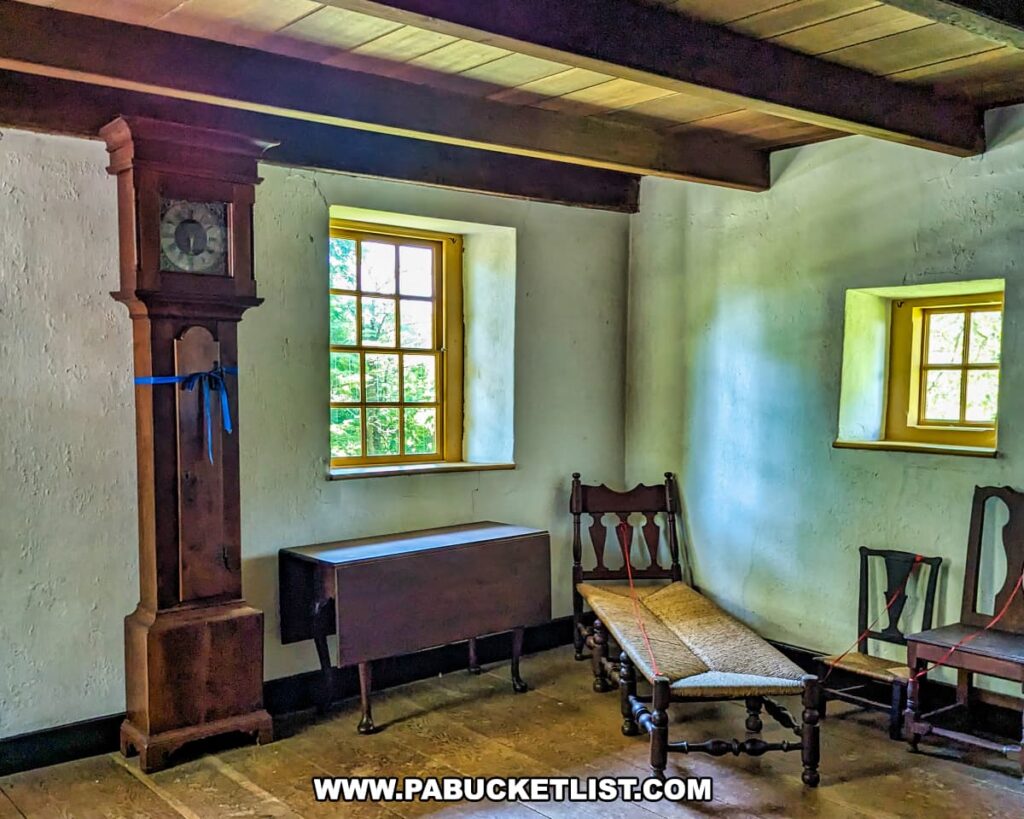
Victorious British officers occupied and ransacked both homes after the battle.
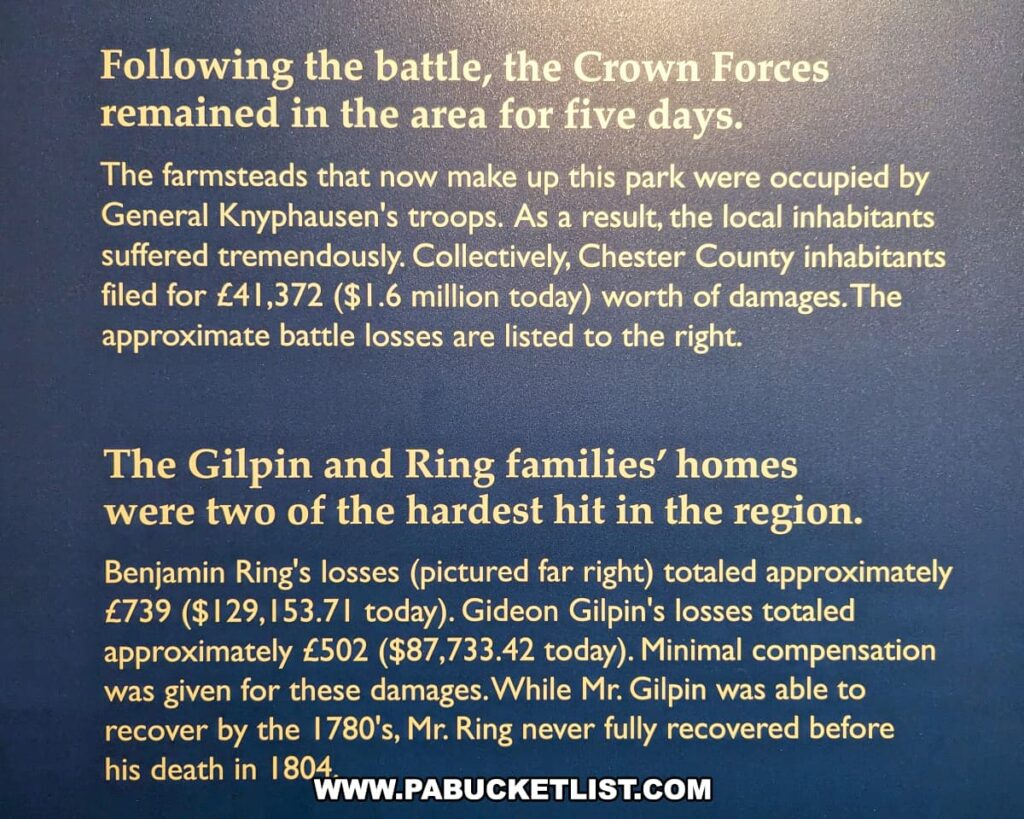
Outside the Gilpin house is a towering old sycamore tree.
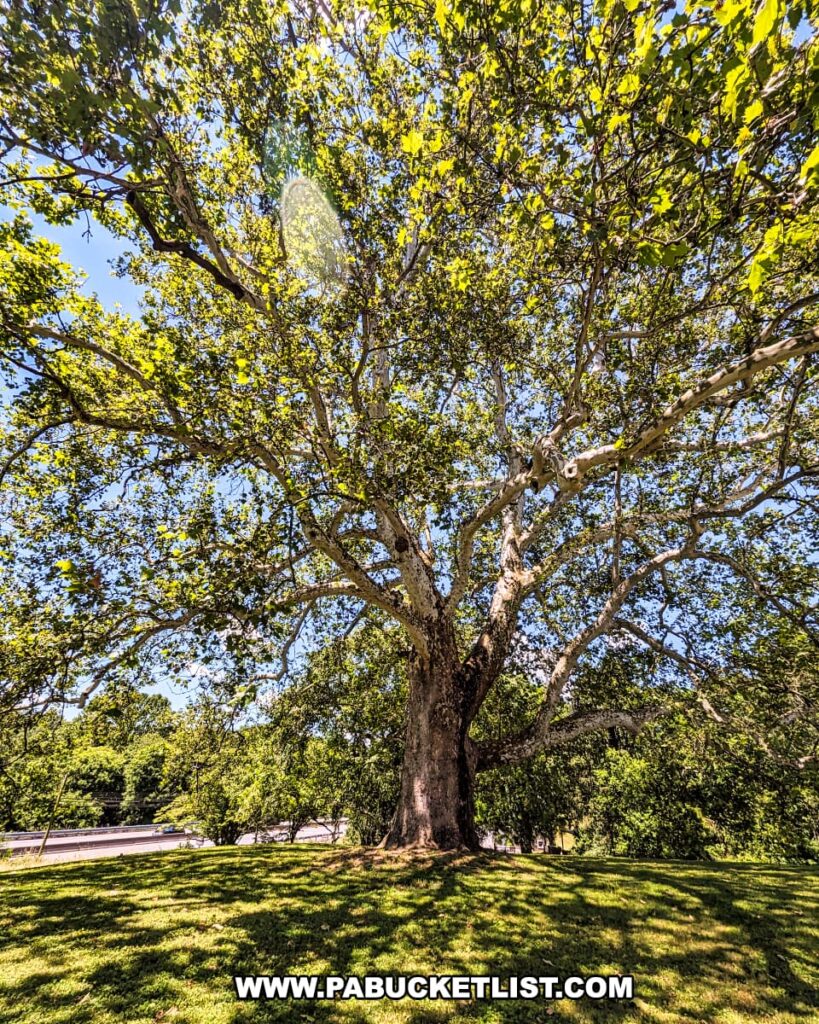
Known as a “witness tree”, this sycamore was already growing here when the Battle of Brandywine took place, and when the Constitution of the United States was signed 10 years later.
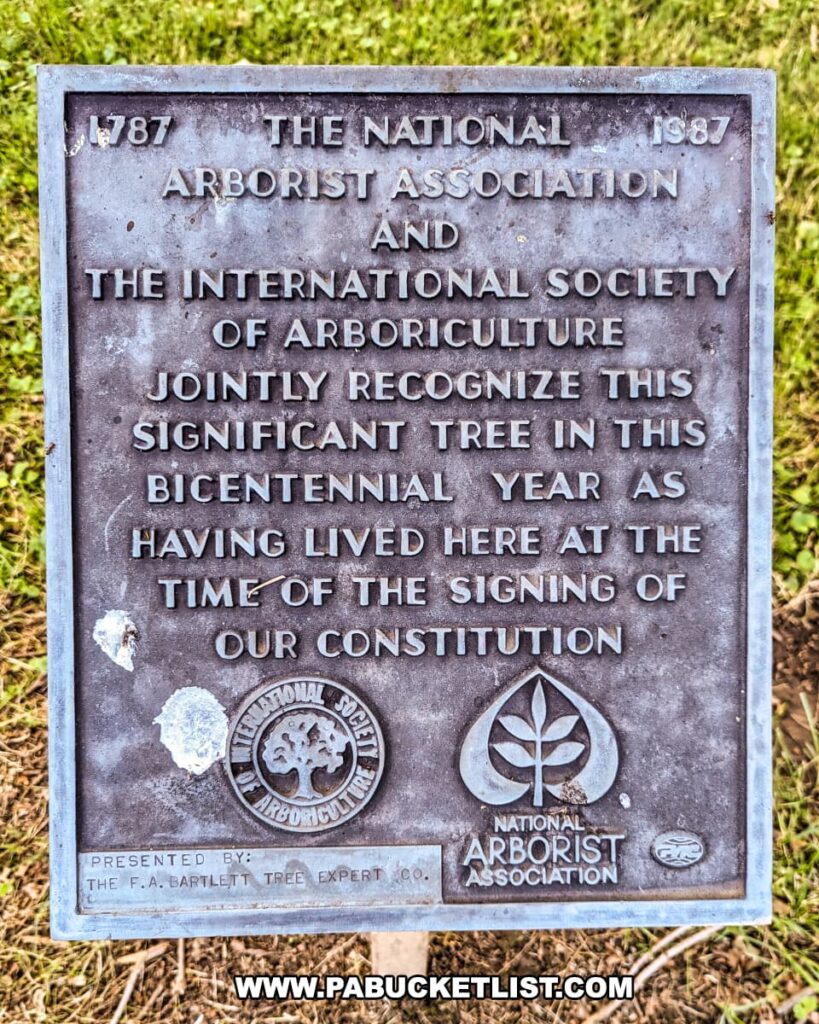
Visiting the Actual Battle of Brandywine Battlefield
If you want to visit sites where the actual fighting during the battle occured, you have a trio of options just minutes away that can be accessed by a self-guided driving tour (refer to the map at the beginning of this article for exact directions).
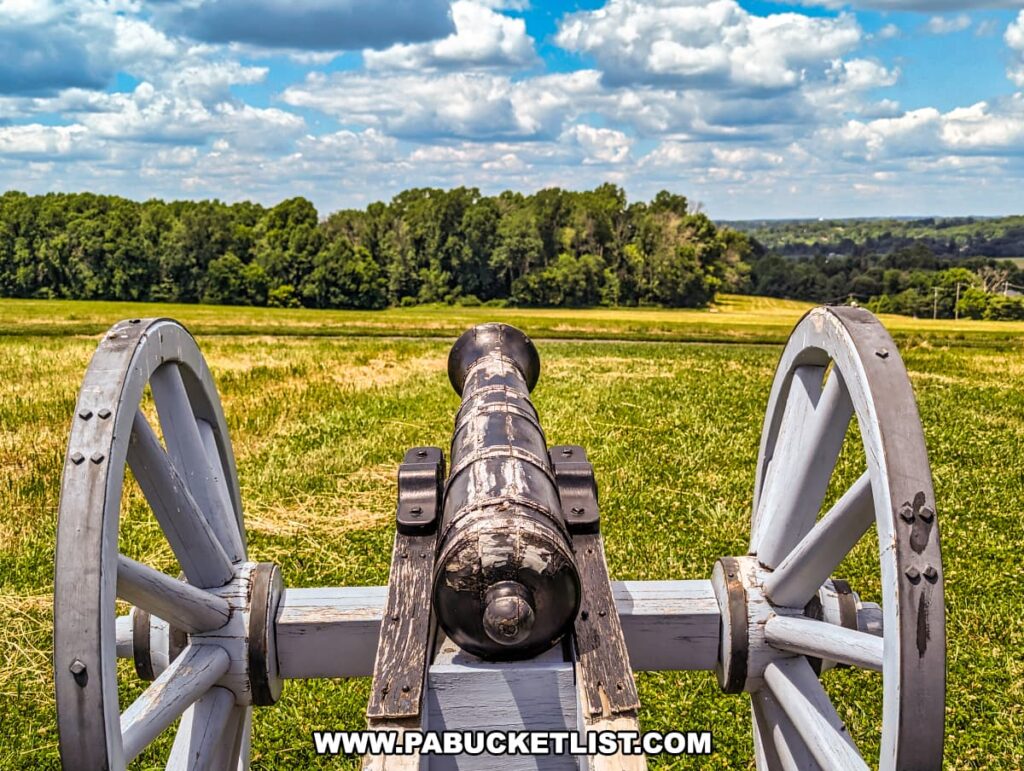
1. Birmingham Hill
Birmingham Hill was the site of the first line of defense of the Continental Army during the Battle of Brandywine on September 11, 1777.
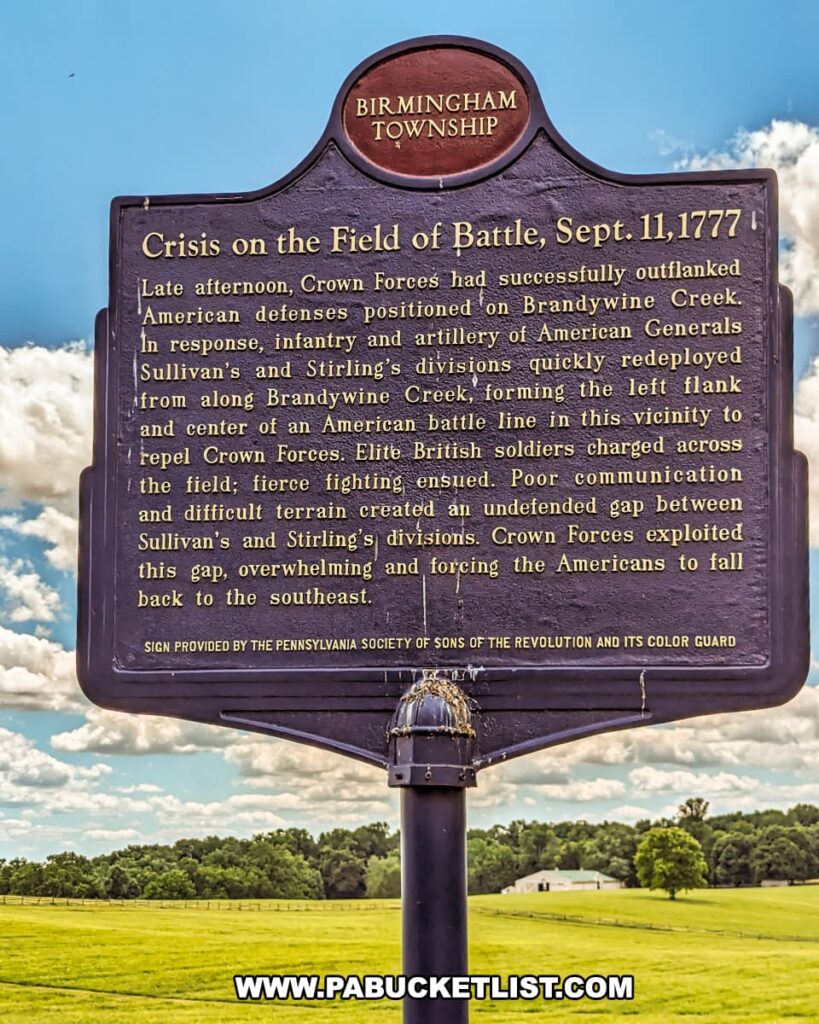
Today is resembles a pristine pasture, but on that day in 1777 it was the scene of fierce fighting.
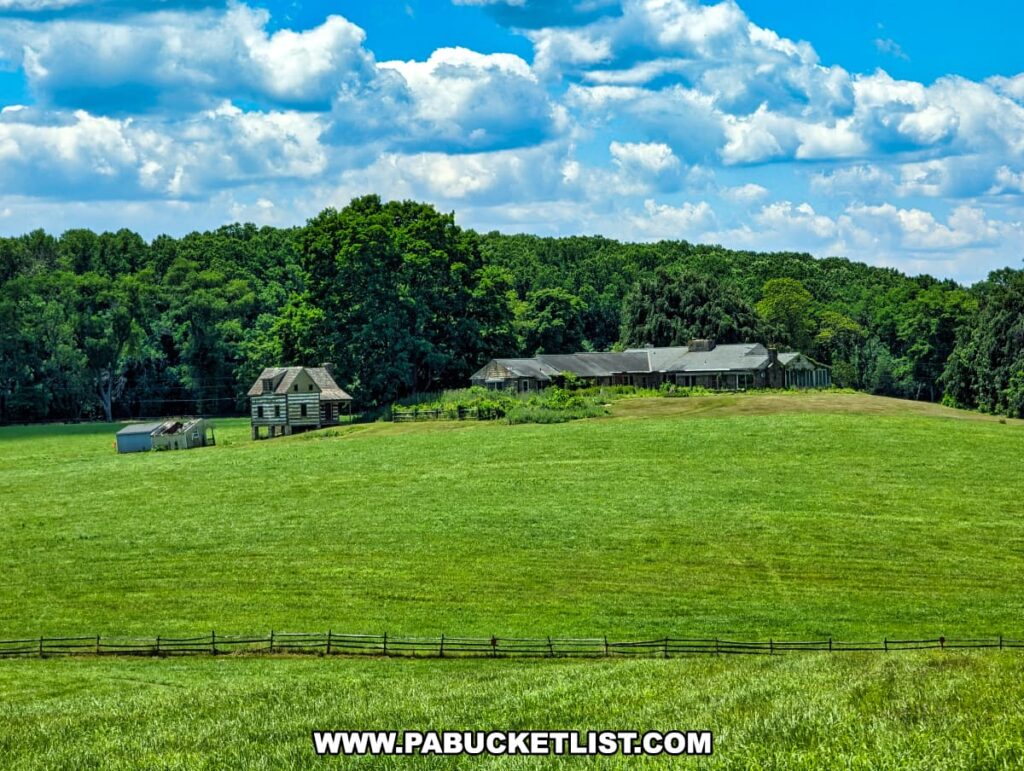
A one-mile hiking trail allows you to walk the perimeter of the field.
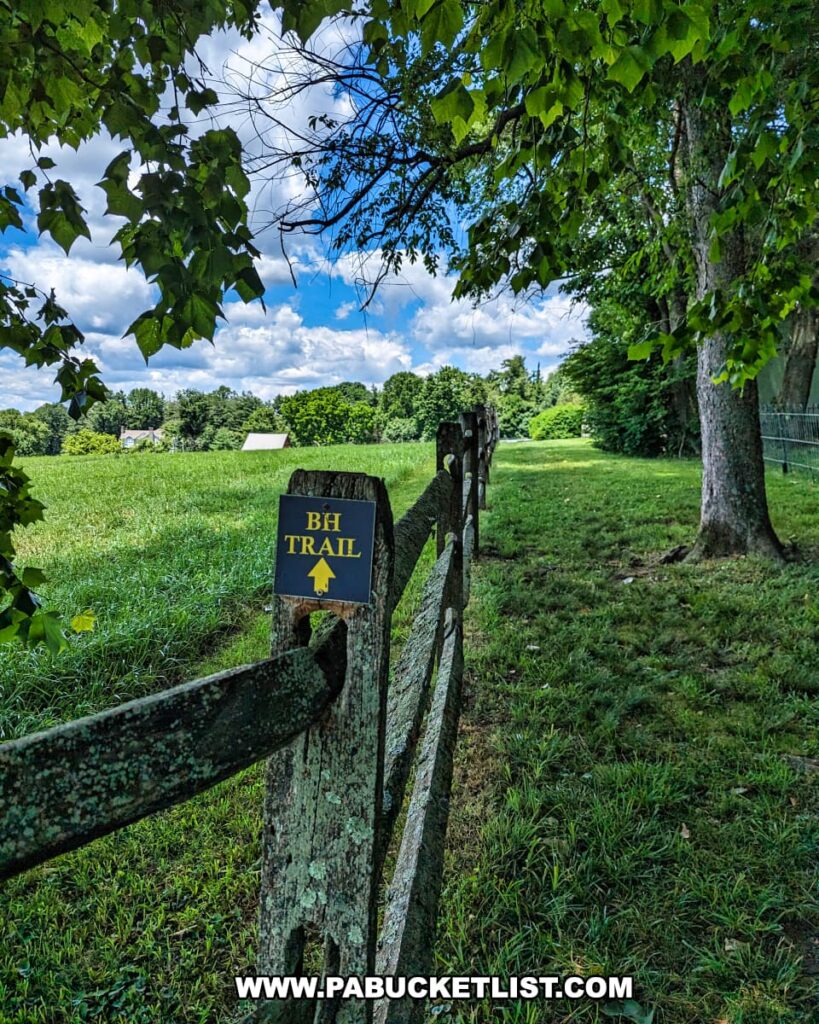
Infographic panels along the way tell you about the fighting that took place here.
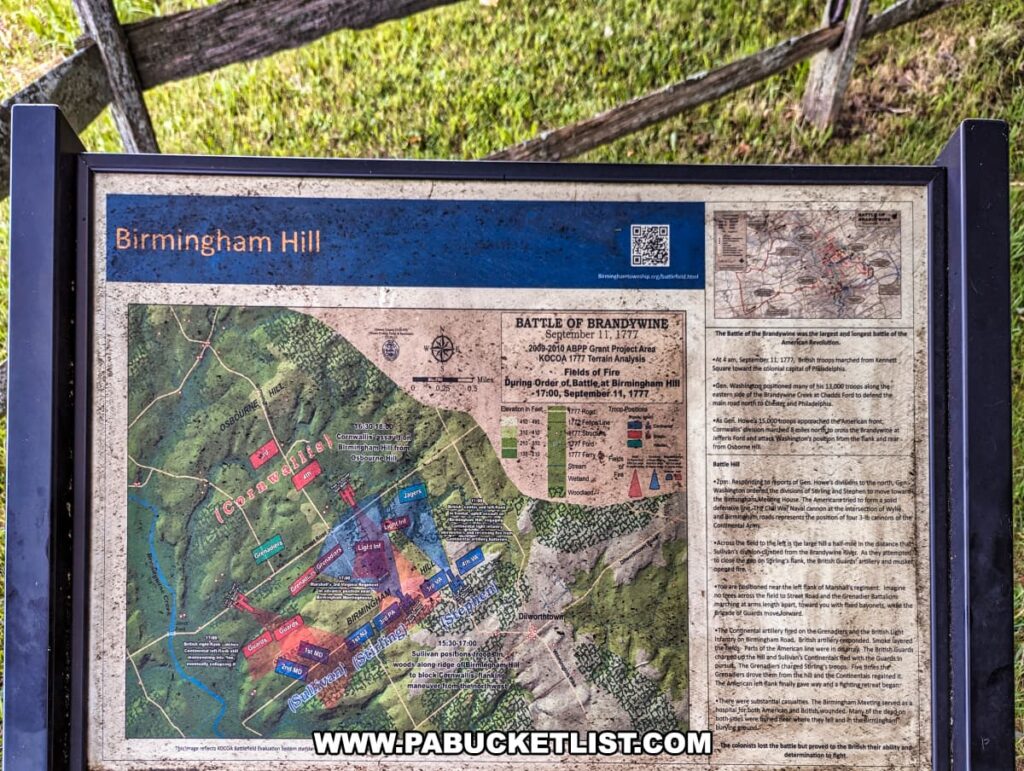
2. Birmingham Friend’s Meeting House
Located adjacent to Birmingham Hill, this Friends meeting house was used as a hospital for wounded soldiers, initially by the Continentals, and later by the British as they swept Washington’s troops from the field.
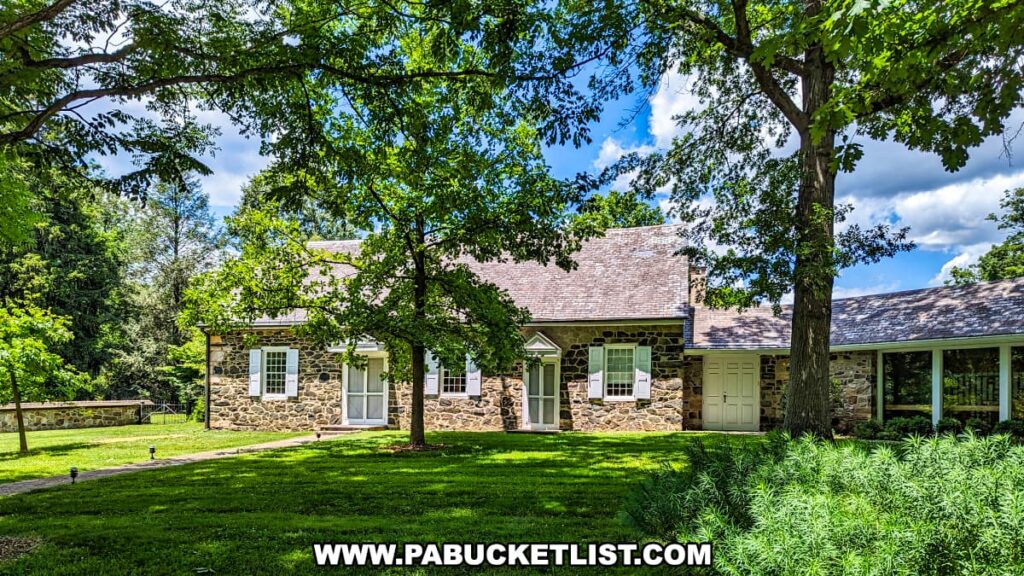
A plaque outside the meeting house denotes its historic status.
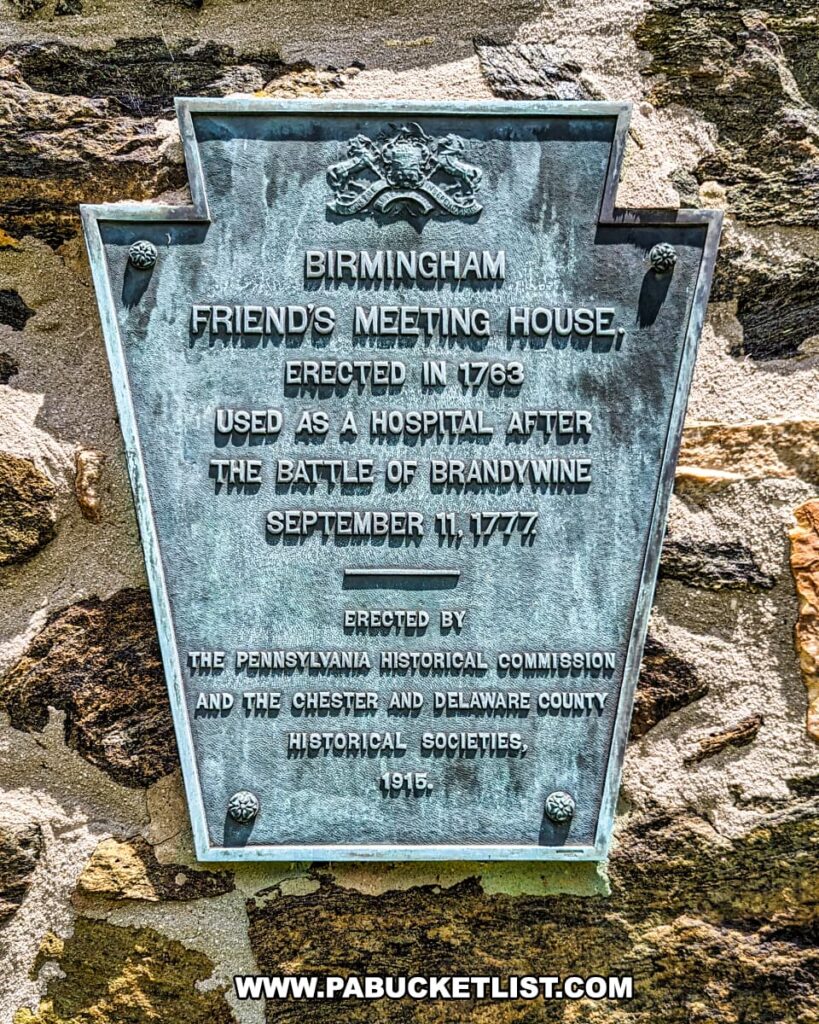
3. Sandy Hollow
Sandy Hollow was the second American line of defense, after retreating from Birmingham Hill.
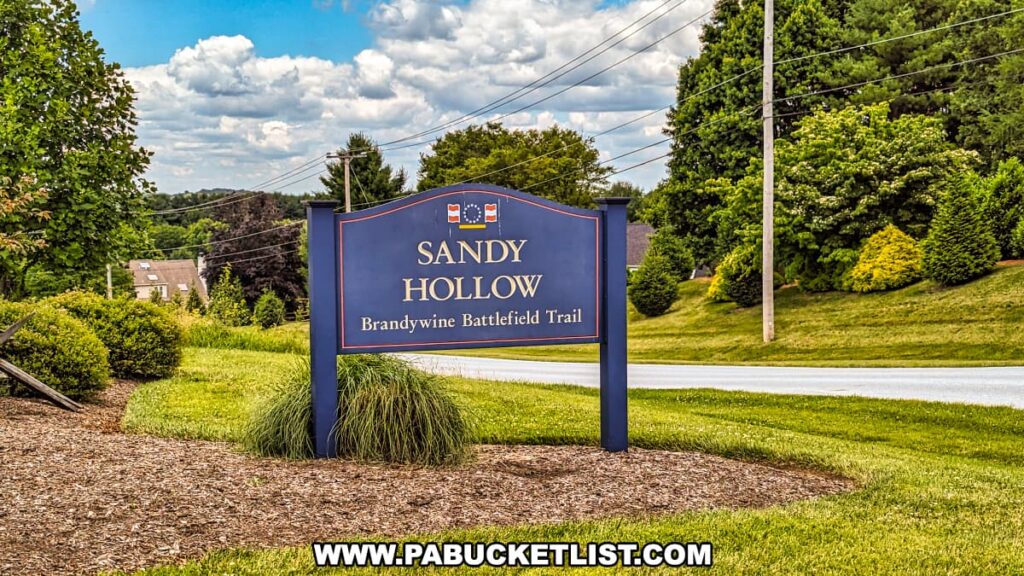
Sandy Hollow Heritage Park is comprised of 42 acres of preserved open space, much as it was in 1777.
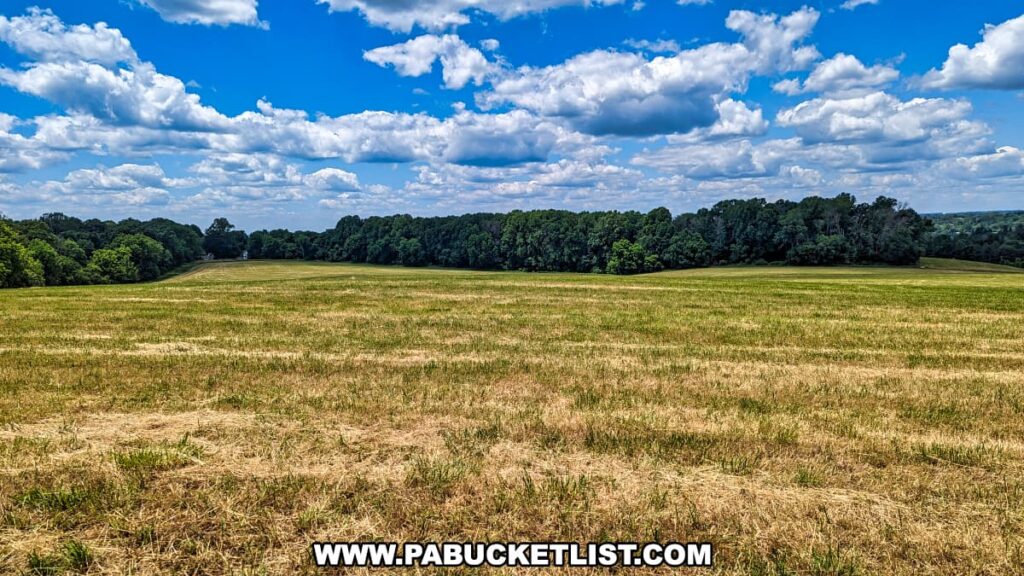
There were substantial casualties suffered by both sides on this field, with many of the dead being buried near where they fell.
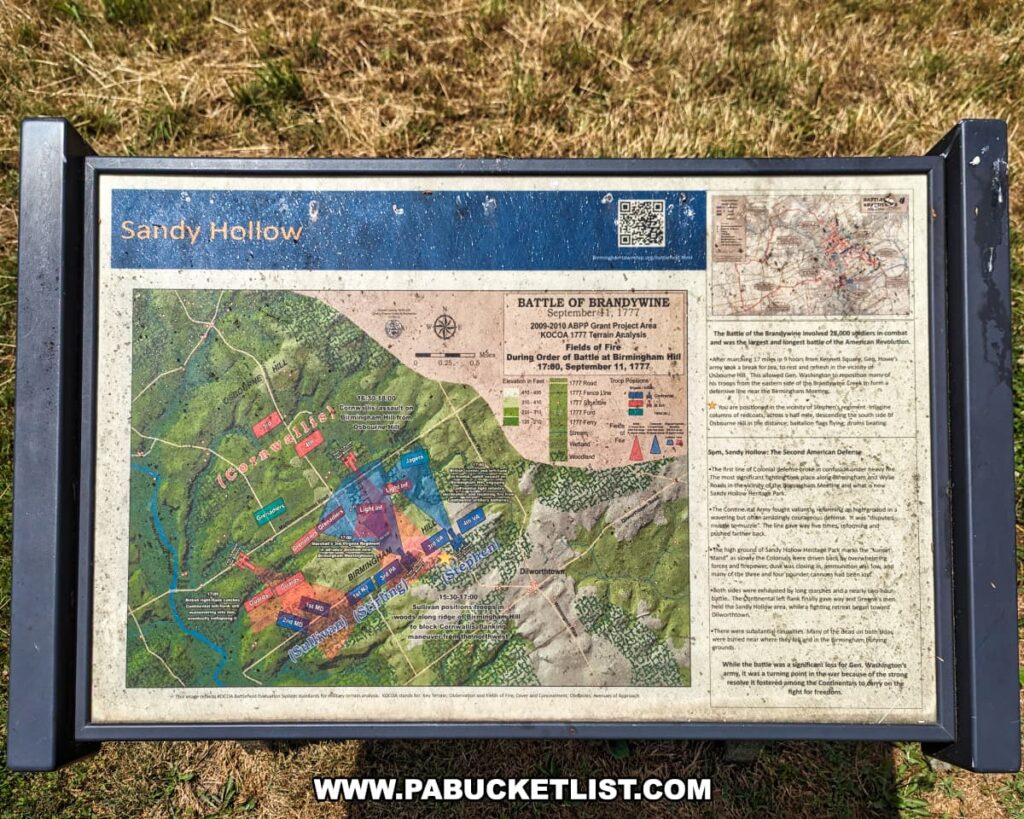
As with Birmingham Hill, a one-mile walking trail allows you to walk the perimeter of the Sandy Hollow battlefield.
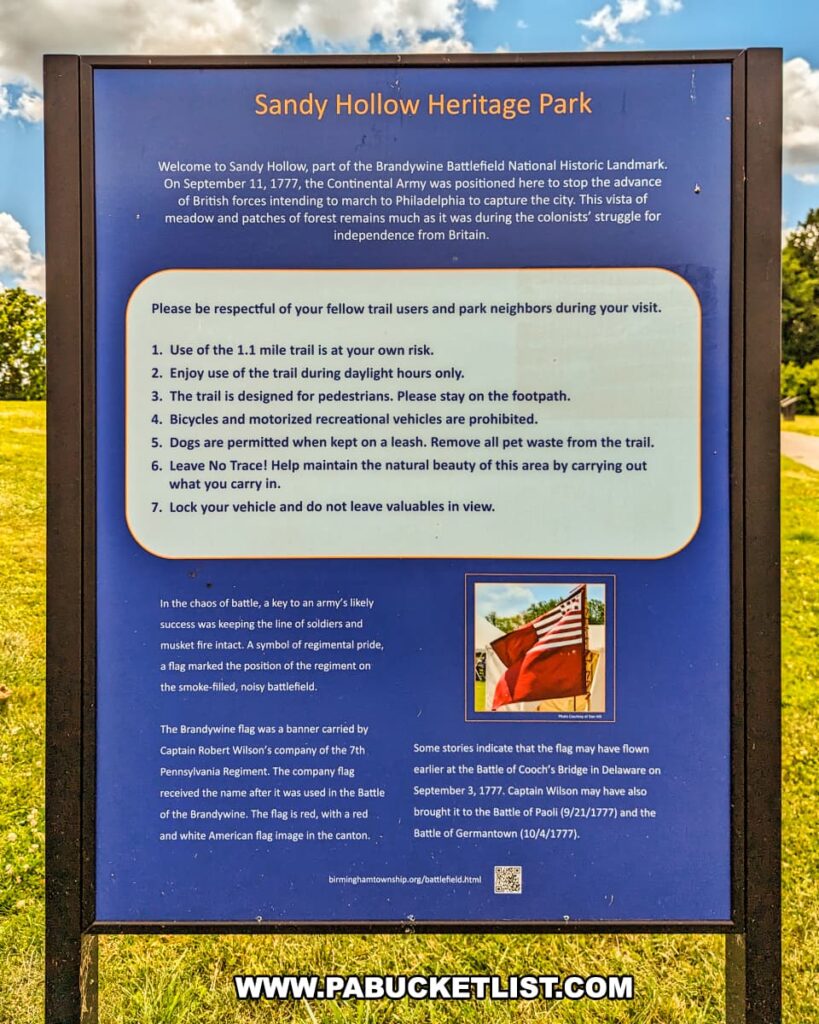
Final Thoughts
Despite being a major defeat for General Washington’s forces, the Battle of Brandywine marked a turning point in the war, strengthening the Continental Army’s determination to continue their struggle for independence.
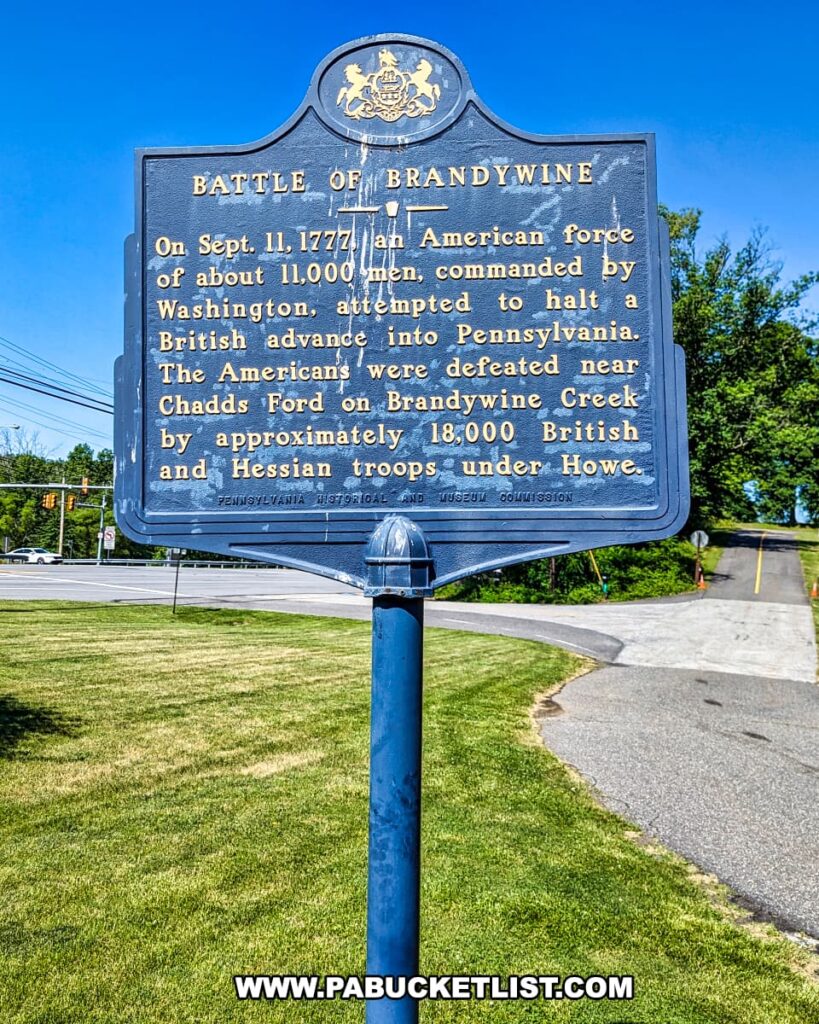
Today, visitors to Brandywine Battlefield Park can immerse themselves in the pivotal history of the largest and longest single-day battle of the American Revolution.
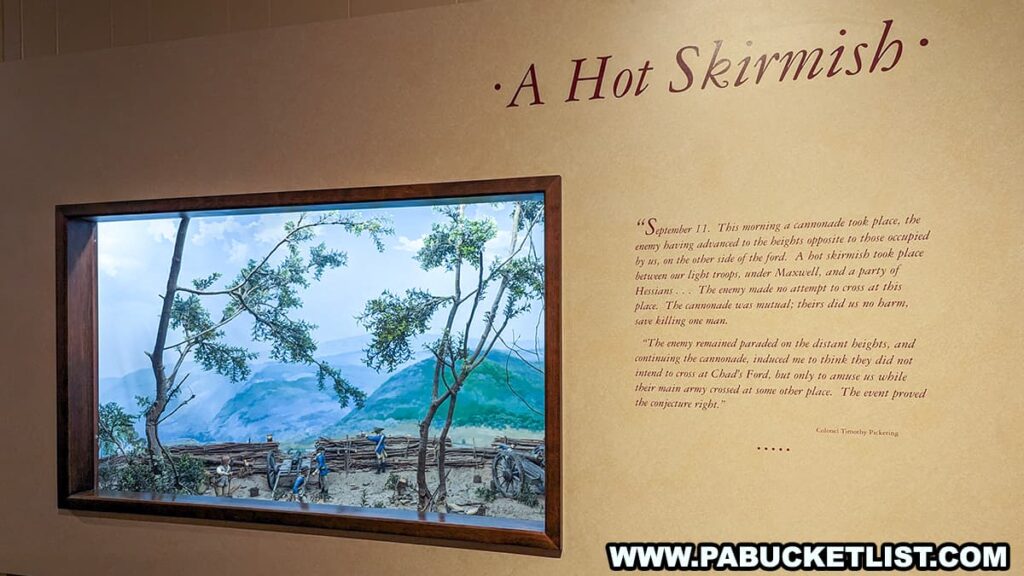
The park offers a unique opportunity to explore historical landmarks, interpretive exhibits, and scenic trails that bring to life the stories of bravery and resilience from this crucial moment in America’s fight for independence.
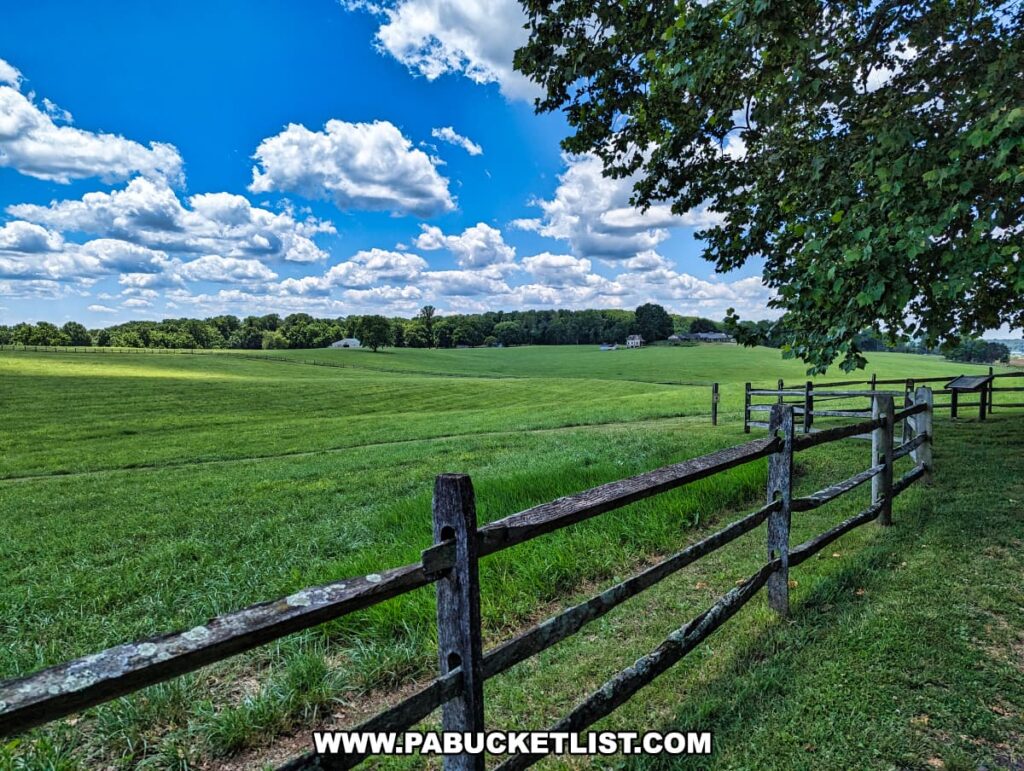
For more information, please visit Brandywine Battlefield Park’s OFFICIAL WEBSITE.
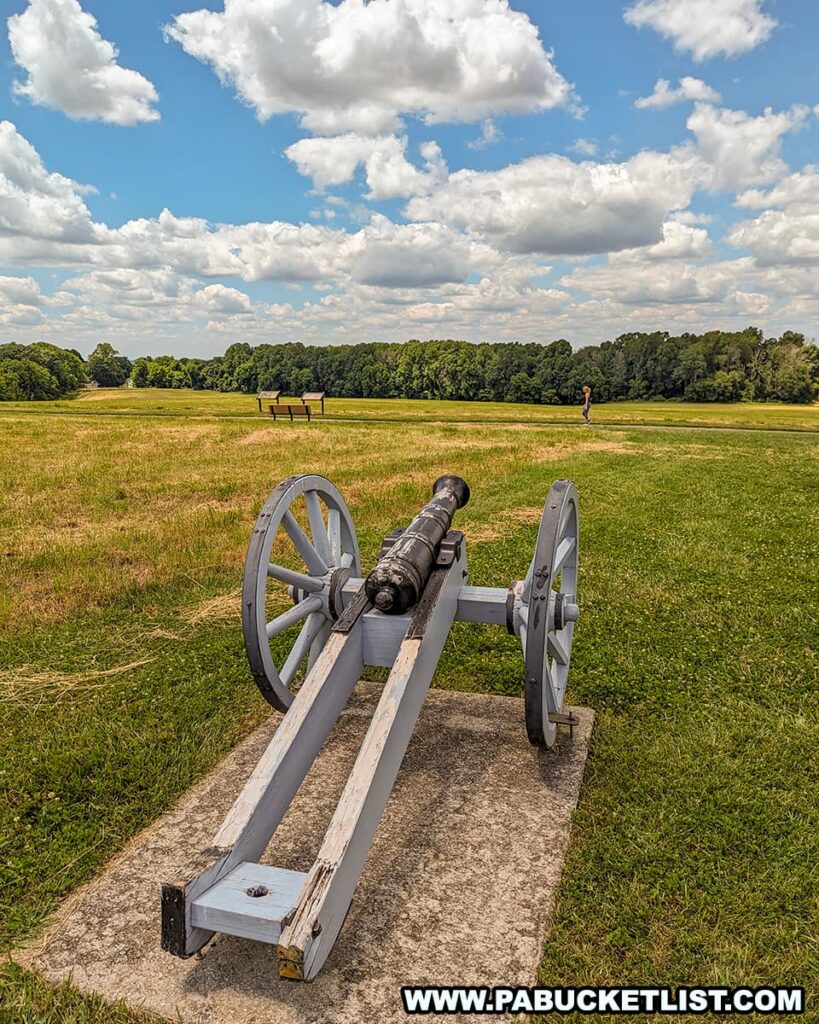
Related Attractions
The Museum of the American Revolution in Philadelphia uses historic artifacts, dioramas, short films, paintings, and other exhibits to tell the story of the Revolutionary War in America.
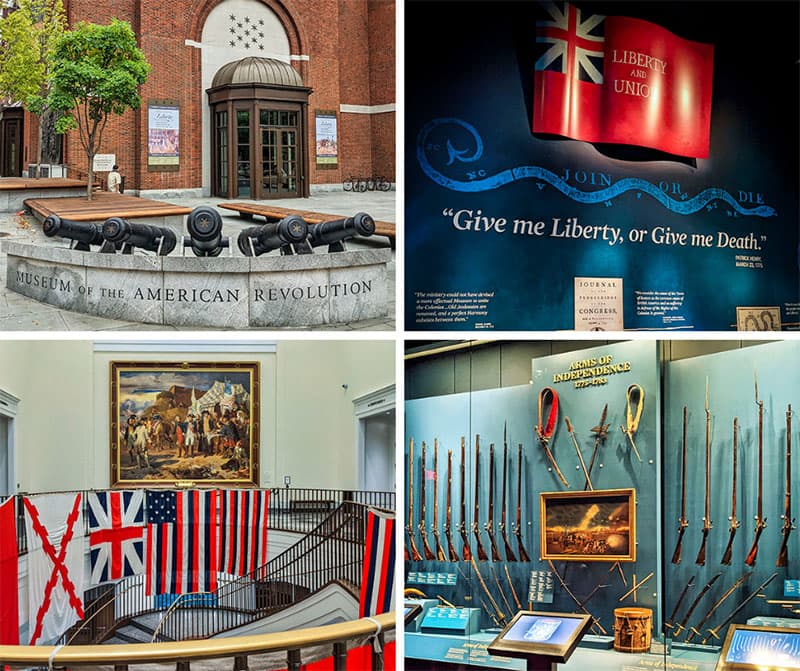
Independence Hall in Philadelphia is the birthplace of the United States!
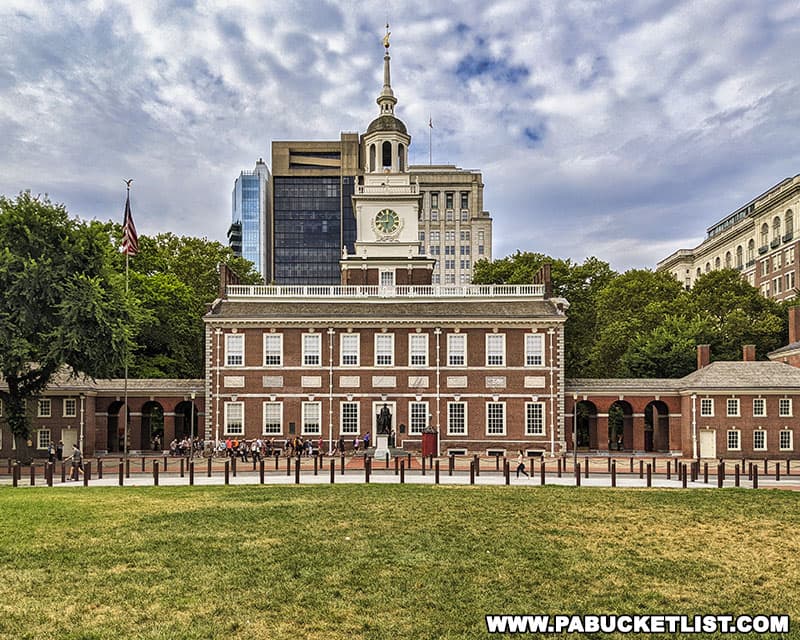
The Declaration of Independence and U.S. Constitution were both signed here, and today you can take a guided tour of what is arguably the most important and historic site in the United States.
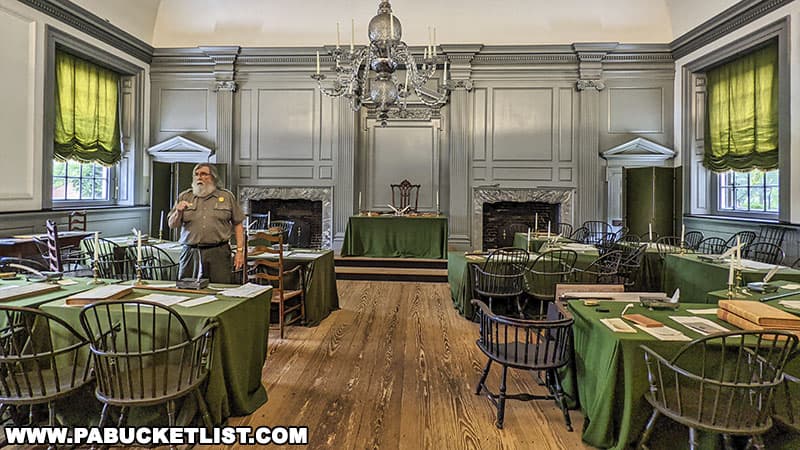
The Betsy Ross House is one of Philadelphia’s most popular tourist attractions, said to be the site where Betsy Ross sewed the first American flag in late May, 1776.
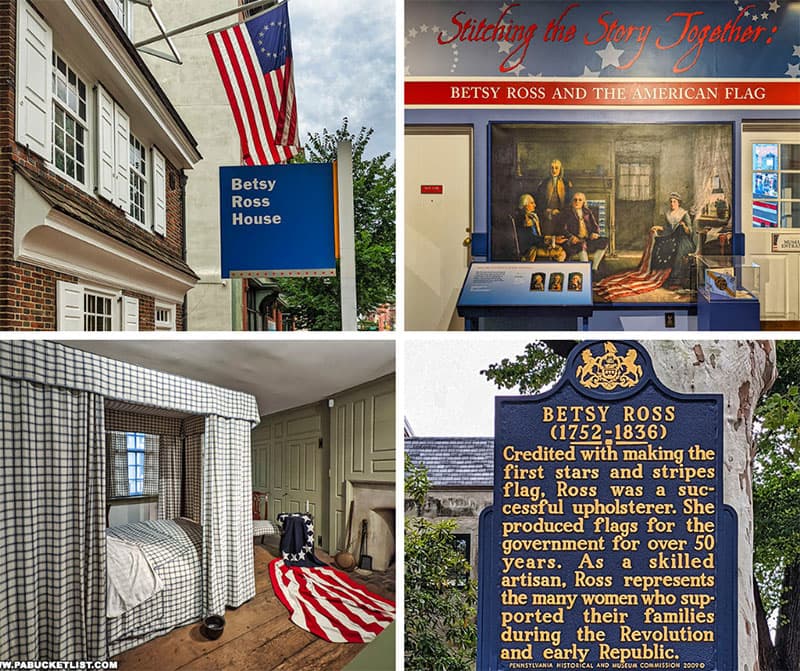
Valley Forge National Historical Park near Philadelphia is a tribute to General George Washington and the Continental Army, which spent the winter of 1777-78 here, overcoming adversity of many kinds and emerging as a stronger, more capable fighting force that ultimately defeated the British forces in the Revolutionary War.
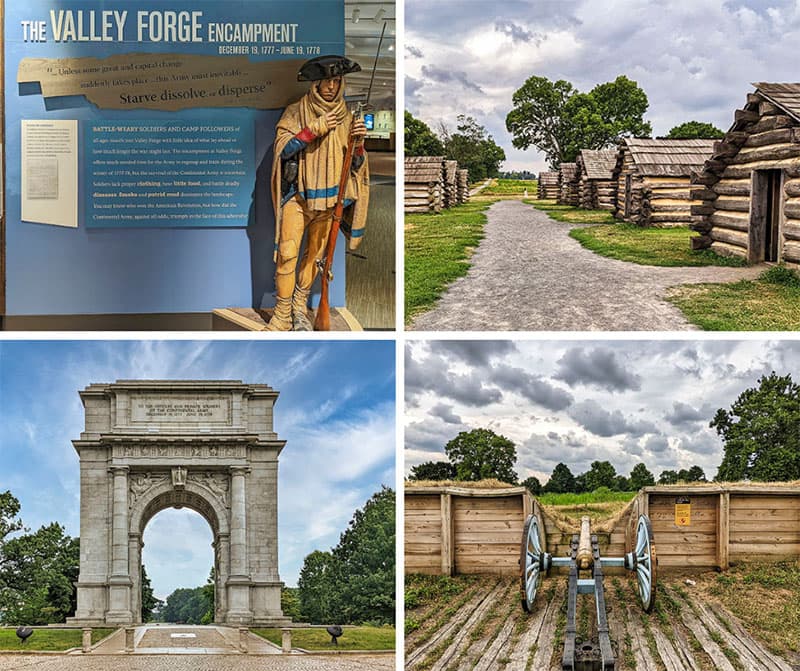
The Molly Pitcher monument and gravesite in Carlisle offers a poignant glimpse into the life of one of America’s most-celebrated Revolutionary War heroines.
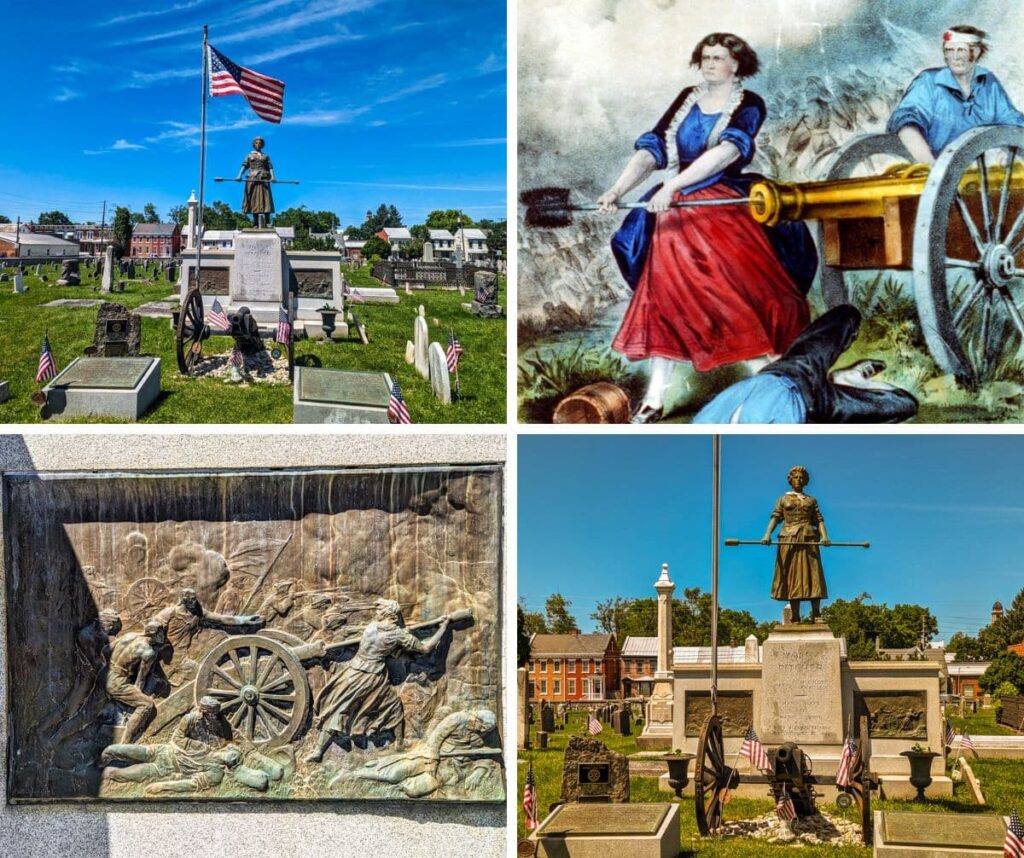
Nearby Attractions
Longwood Gardens in Chester County is a horticultural paradise that happens to be one of the most renowned botanical gardens in the world!

Find even more great spots to explore all across Pennsylvania with the interactive PA Bucket List Travel Map!
Did you enjoy this article?
If so, be sure to like and follow PA Bucket List on Facebook, Instagram, and/or Pinterest to learn more about the best things to see and do in Pennsylvania!
Click on any of the icons below to get connected to PA Bucket List on social media.


